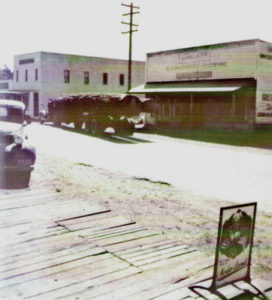 The Siletz Reservation is contiguous with Siletz on its east side and lies to the north and southeast of the town as well. The roots of the Siletz peoples lie in some 27 tribes that once populated the coastal areas of Lincoln, Tillamook, and Lane Counties. In 1851 the U.S. Federal Government forced the Indians of Western Oregon onto reservations as a way of reducing conflicts between the Indians and the flood of Euro-American settlers who came for the area’s newly found gold.
The Siletz Reservation is contiguous with Siletz on its east side and lies to the north and southeast of the town as well. The roots of the Siletz peoples lie in some 27 tribes that once populated the coastal areas of Lincoln, Tillamook, and Lane Counties. In 1851 the U.S. Federal Government forced the Indians of Western Oregon onto reservations as a way of reducing conflicts between the Indians and the flood of Euro-American settlers who came for the area’s newly found gold.
Over the years the size of the Siletz reservation has been reduced. A railroad to the coast split the reservation in two in the late 1860s and large sections of the reservation were opened to White settlement by the federal government. In the next couple of decades parts of the reservation were closed and the Dawes Act of 1887 placed tribal lands into allotments. Those lands that were not eventually allocated to Indians went into the public domain and were sold to settlers. In 1956 the Western Oregon Termination Act declared that the people of the Siletz Tribe were no longer Indians. As a result more of their land was sold to settlers, and also given to the town of Siletz. In 1977 the Siletz Tribe, with the enactment of the Siletz Restoration Act, was again recognized as an Indian tribe. The reservation now includes approximately 39 acres near town and 3630 acres of timberland throughout Lincoln County. In 1991 the Tribe built a 13,500 square foot Tribal Health Clinic just outside of the town. The clinic is a valuable asset to the community as it serves tribal members and non-members. Today the Confederated Tribes of Siletz plays an important role in the area.
Native Americans relied on the areas natural resources long before the arrival of Euro-American settlers. At the beginning of the colonial era, native peoples subsisted by fishing, hunting, and gathering. In the more recent past the Siletz Tribe relied on the areas natural resources for their sustenance. “They gathered a variety of plants, hooked and trapped lamprey, caught salmon, collected freshwater mussels, and hunted deer. However, recent declines in lamprey and salmon populations have reduced access to these two important traditional food sources. Although the State does not recognize the Tribes coastal fishing rights today, the tribe believes that they are legitimized via treaty rights.
Euro-American settlers continued to enter the Siletz area throughout the latter 1800s. They established general stores in the community. For homesteaders who settled in rural areas outside of town, pack trains brought supplies to them. Siletz was similar to the rest of Lincoln County as its major industries were logging, lumbering, farming (agricultural and pastoral), rock crushing, reforestation, gathering of native flora, and cascara bark peeling. The townsite of Siletz was established in 1910. The city was eventually incorporated in 1946. In the early days travel in the Siletz area was difficult, as most was done by foot or horse. A ferry aided those who crossed the Siletz River. The June 29th 1939, Lincoln County Leader describes Siletz as a center of trade and logging, as much of the timber headed for California and many eastern ports at that time came from the area.



